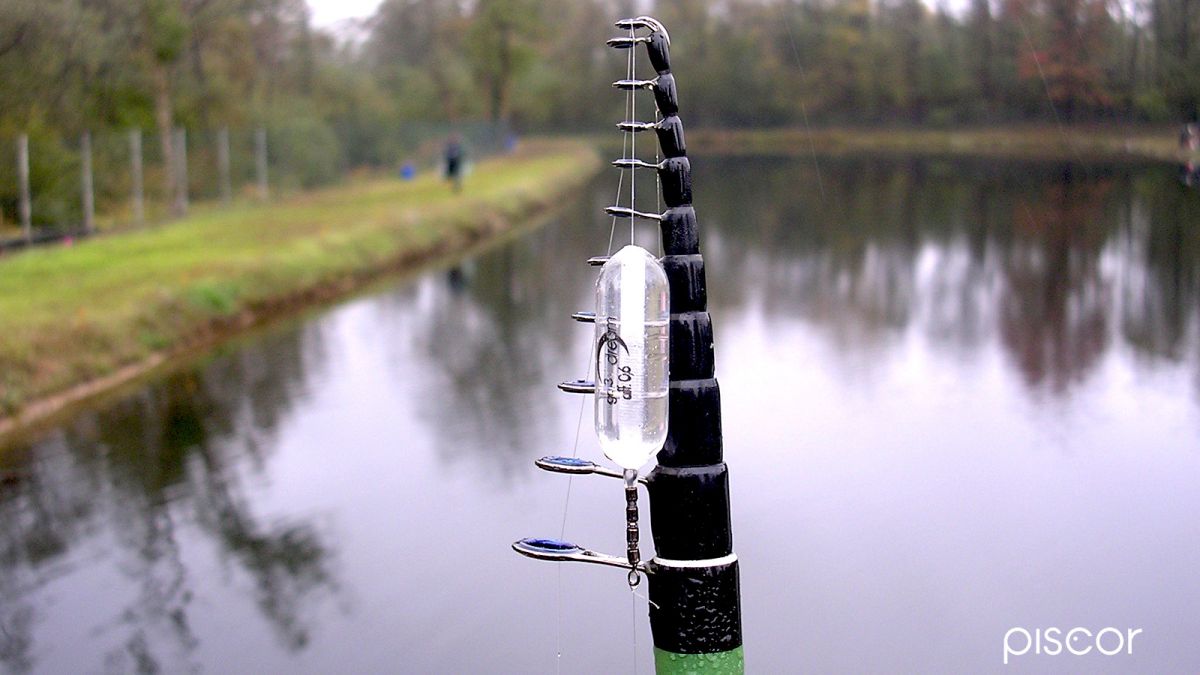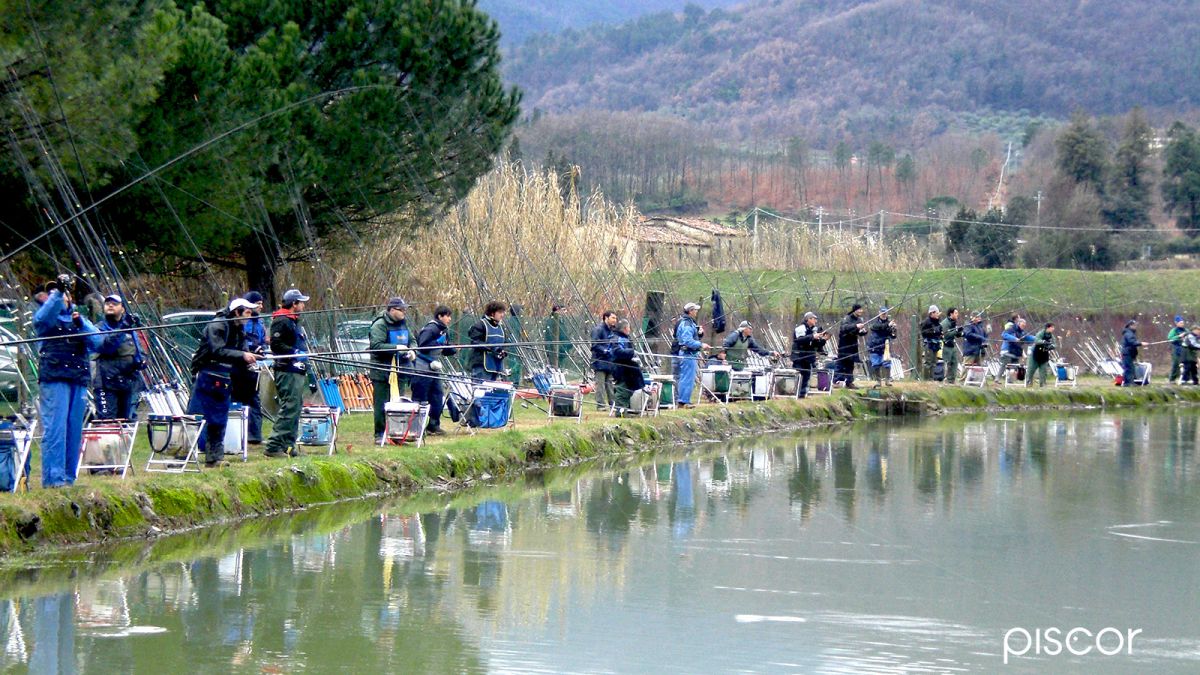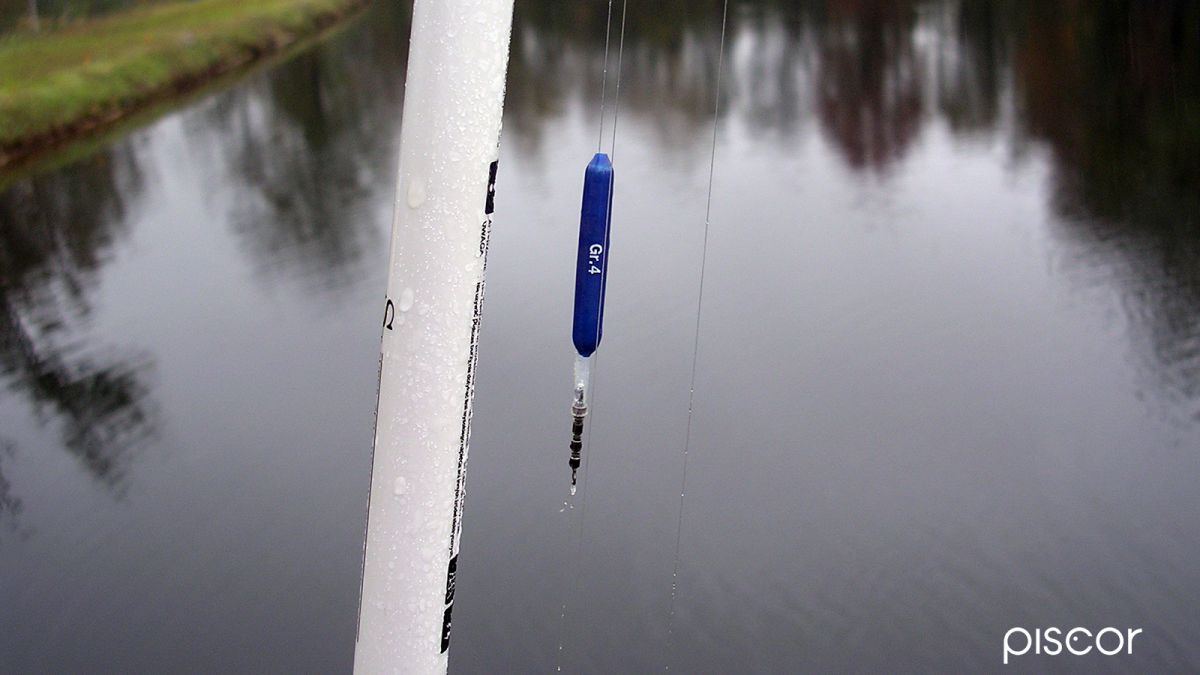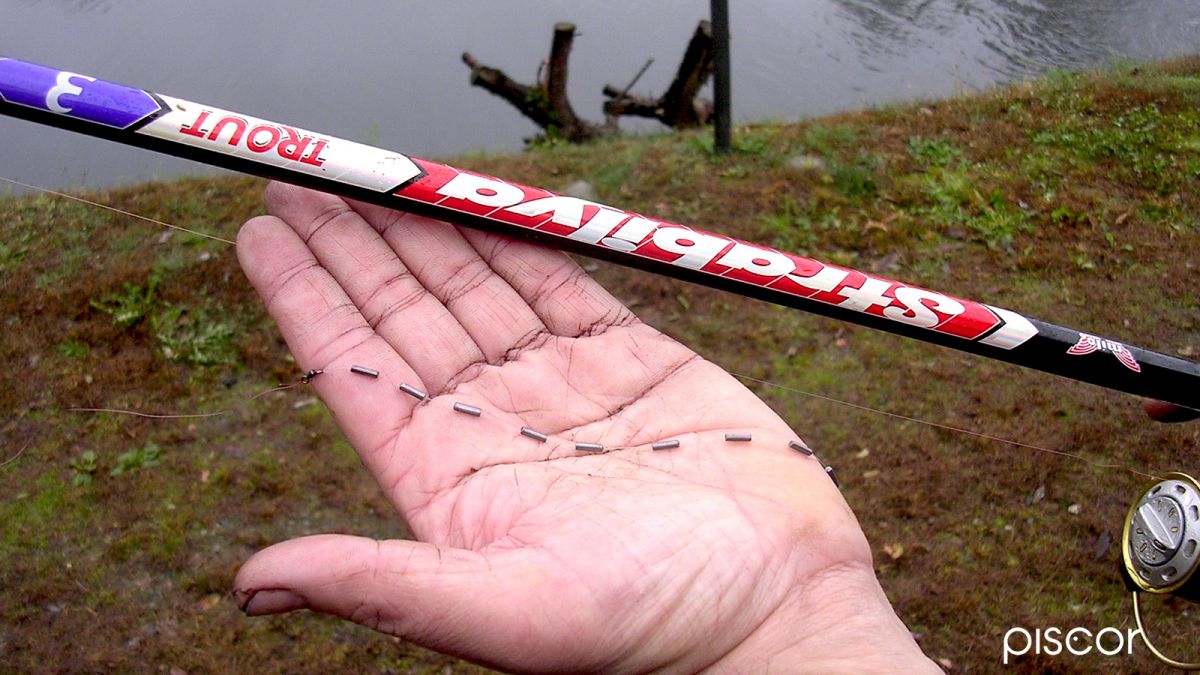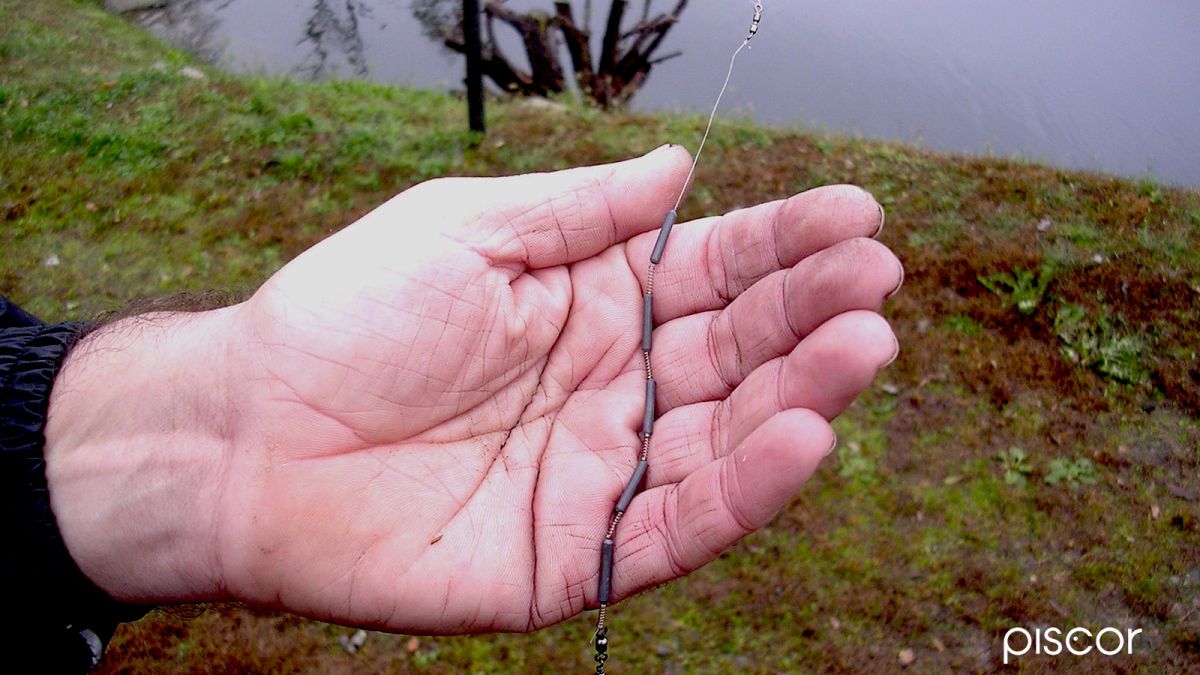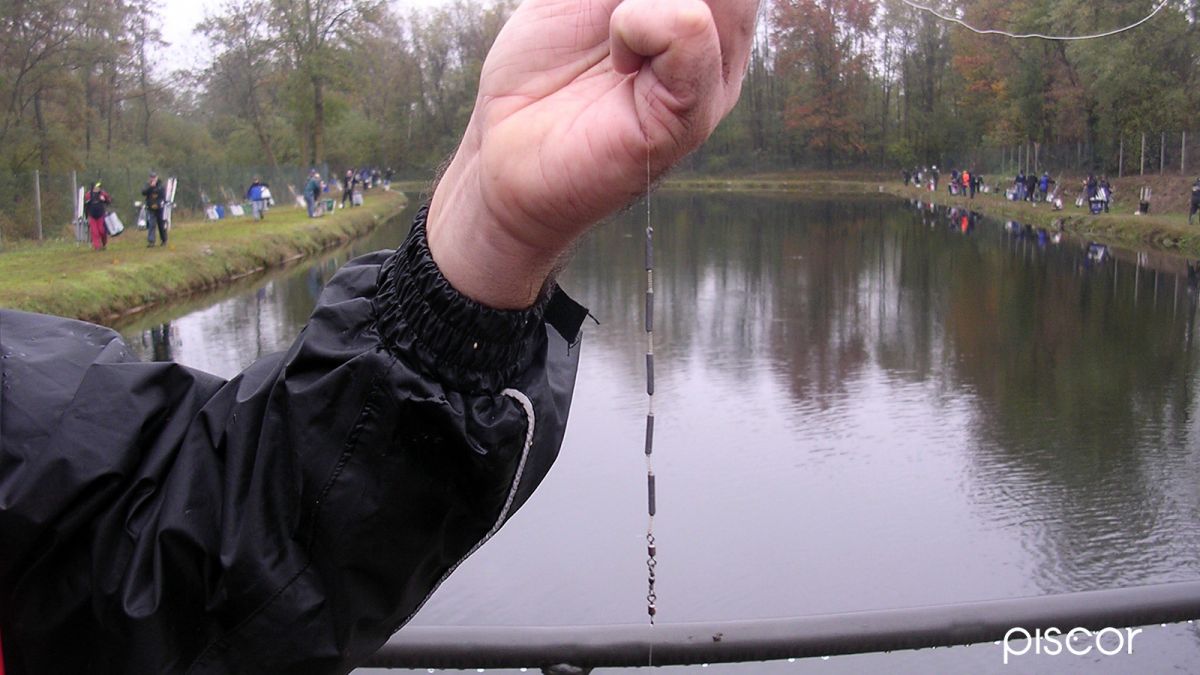Short distance fishing is when you fish close to the bank, with a less than 5 g weight. It is an absolutely successful fishing in small- medium lakes or in larger lakes when trout aim to stay close to the bank and are easily catchable with casts of about 20-25 meters.
In the world of competition piombino fishing is very popular. You can often see many piombino rods on the anglers’ rod pods.
Those rods are very useful when fish schools swim close to the bank. The piombini have no floating index and so their speed of sinking varies according to their shape and to the angler’s recovery speed.
The piombini leads can be “short” or “slim”.
The short ones sink very fast. They are used in winter, especially for legering fishing, with a fast recovery or with aggressive trout. They are very good in the first phase of the competition, when you need your lead to stay at the bottom.
The slim ones are longer and thinner. They sink very slowly and they are perfect for fishing on the first layers of the water.
The super-slim leads, instead, are around 3 g and very long. Perfect with lazy fishes on the water surface. The glass sinkers are more floating than the traditional leads, thanks to their specific weight which is 40% lower than the lead one. A 4g glass sinker has the same floating than a 2g lead sinker.
Glass is invisible in water. Perfect in Autumn and for the surface fishing.
The Sonar and the Stick-chain
Another kind of ballast is the sonar. It is made of perforated and sliding lead cylinders, their weight is between 0.2 and 1 g. You can realize small chains using many elements. The cylinders are separated by small springs or plastic pieces that distribute the weight on the longer section of the main line.
It is a very versatile and customizable set, suitable for different fishing situations, from the research phase to the start.
It derives from the stick chains and it is the Northern Italy anglers’ favorite one. They both have the purpose to distribute the weight on the main line and give the rod a softer and slower fishing action to stimulate the trout agressivity.
They are very similar, but between the two there is a substantial difference: the first ones are sliding the second are fixed on the line.
The stick chain is made by a line with a diameter of 0.20-0.22 mm, between 2 swivels. That will allow you to change the set without throwing the previous one away.
The sizes of leads can vary from 14 to 20 mm: with lazy fishes prefer smaller sticks and put them at a great distance, to fish at the bottom use closer and heavier leads.
Fishing actions
The traditional fishing action is the “tremarella”, developed by Gino Soffritti: this technique consists in making the baits go forward spinning constantly, with a zigzag jerky movement in water.
The jumping effect of the bait is given by the movement of your wrist, which makes the last part of your rod vibrate. Its intensity is up to you. You just have to use the rod, not the reel, which has to maintain the lead in contact with the tip of the rod. Perfect with active fishes on the first layers of the lake.
Another recovery system is the “salterello”, it is less frenetic and more linear. The movement is bottom-up, with some short and sudden accelerations. The bait will jump, alternating linear slow movements to sudden fast jumps. This slow fishing technique is more effective in cold periods when the trout like to stay at the bottom.
The best rods for trout fishing are the tremarella rods, because they have a soft parabolic action, and they can bend a lot under the anglers pressure.
There are 3 main actions:
- Soft parabolic action, with weights between 2 and 2,5 g, perfect during the research phase.
- Rigid rod for 3-3,5 g leads, less parabolic and soft
- Rigid rod for 4-5 g leads, suitable for the start and when fishes are abundant
What makes the difference is the length of the terminal line. In bottom fishing it should never be longer than 60-70 cm, to allow the bait to don’t go too far from it. In medium layers fishing you will need a 80-100 cm final line, instead with apathetical trout on the surface in can also exceed the 120 cm.


